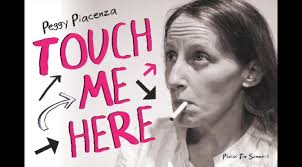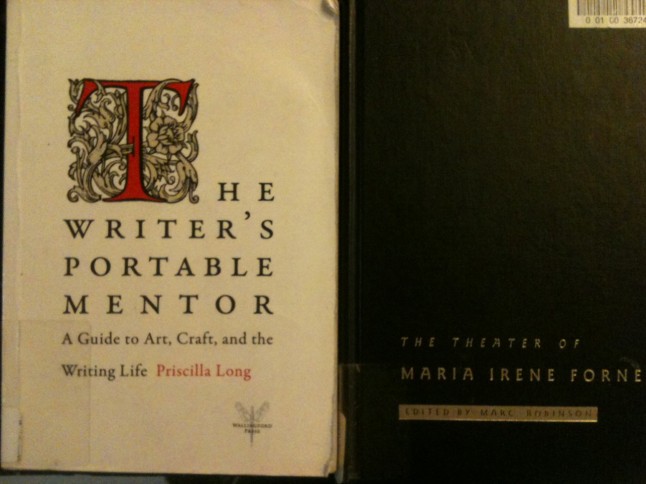2014 has been a good year for me for witnessing live performance. Certainly, my view of what stood out is subjective; much of what makes a show memorable is the backstory – what I wore, who I went with or if I flew solo, what method of conveyance I used, how my mood was heightened/dampened by the spectacle and so on. I do not deny anyone who wishes to rate art objectively; my review will revel in subjectivity. And despite 2014 being a watershed year for me there are still many shows I missed out of personal ineptitude which may well have been deserving of a mention. Nonetheless, on we go – the top ten live performances I witnessed in 2014 (in no order of significance):
1. The Dina Martina Christmas Show, Re-bar, December 21, Winter Solstice 2014

Noteworthy to start with is the fact that I am desperate to get out of the house and seize upon the Dina show as a life ring. Writing about myself in the 3rd person, “she hefted up her healthy vagina and ran to the freeway where she hailed down a bus and ran riotous to the Re-bar hoping for relief in the form of belly laughs and bodily secretions.” In short, I am in need of a soul purge on the darkest night of the year and boy does Dina deliver. But first I have to find a seat. Like a Christmas miracle, after all ticket holders are accounted for, one perfect seat sits empty, beckoning – center, 3 rows from stage, on the aisle. I take it certain of my status as the chosen one.
Ms. Martina and her accompanist Mr. Jeffries are ideal counterparts. She does all the talking and gesticulating while he sits stoney faced as his fingers coax mellifluous sounds out of his keyboard. It is like being held in the maternal bosom of an aunt who means the world to you because of her wit and her style but also because she accomplishes thru humor what our Lord Jesus claims to: redeeming us from the agonies of the material world. And the effect lasts – 3 days later on Xmas Eve while shopping at Bartells when Taylor Swift came on the mix singing “last Christmas I gave you my heart, but the very next day you gave it away”, I am cheered remembering Dina’s so superior rendition of the song and her playful insertion of “this song, is so repetitive” into the lyrics. Dina’s gifts are the kind that keep giving!
I love seeing Dina up close. And when she calls out a Seahawks fan for checking scores on her phone, I am ready to pummel anyone who isn’t sufficiently adoring. Dina’s rendition of Laurie Anderson’s O Superman is nothing short of gobsmacking. Dina’s gift for knowing which of the original lyrics to keep (and changing the rest) is phenomenal. Her closing number brings me back to my 12 year old self, taking in lines like “then your wife seems to think your part of the furniture, oh, it’s peculiar, she used to be – so – nice/ take the long way home”, which finally makes sense to my jaded ears! But still I can’t place the artist that Dina, through her mastery, has resurrected and, even more miraculously, redeemed for me. Two days later, the ear worm finally delivers the correct answer (I knew it would eventually worm it way out, so I didn’t google it) – Supertramp!!! Glory be to God!
2. Peggy Piacenza, Touch me here, Washington Hall, November 21, 2014
I think that live performance is vital. And I encourage everyone to do whatever is necessary to get oneself out to see it. Sometimes the obstacles seem unsurmountable. That said, I am still ashamed of what I am about to write. When I get to Washington Hall (penniless) and the sign says Cash Only, I respond by glancing about and, seeing that the path is clear, I scramble upstairs to the balcony where I take out my bound notebook and write: “I am a mouse/I slip in undetected/inside Washington Hall/ where the darkness/ reassures me”. Please don’t hate me.
Peggy’s show begins with her crawling towards the audience ass backwards in red shoes. I am riveted. I am interested in what her character will say. There is a dialogue about intimacy – “touch me here”. With her back to the audience she asks “what moments should I talk about?” and “will the truths I express thru the vehicle of this body be transformed into moments of grace?” The story worth telling is inside her body and is teased out with the help of props – “I’ve been with this scarf for 25 years” – she says wringing more lives out of a bandana then Vishnu. Another prop well used is a bell which she rings with a fervor that takes her art out of the personal into the universal. Although Piacenza is an amazing physical performer, it is the audio, designed by Julian Martlew, that really floors me. At times Peggy speaks into a mike, at other times she speaks sans amplification. There is the voice of her mother on the phone prerecorded. Then after Mom puts down the receiver there is a mind-boggling looping sequence where the mental residue from the conversation spills out in a heap, piled up like so many interlacing strands or cluster of stars in a vortex. And for the climax of the piece, like a swimmer hauling her body out of the pool, Piacenza clambers up the lip of the stage and amid spotlight and smoke stands and sings her centerpiece song. At this moment she is a stand-in for the quintessential female deity of chaos and passion, bringing to mind Diamonda Galas in her fierceness, Patti Smith in her willingness to take risks, even, for an instance, Doris Humphrey, with her stark profile and dedication to her craft unfurled for all.
3. Germinal, On The Boards, September 27, 2014
I surprise myself by going to this show which I know nothing about and bringing a date. The performers are French and their premise is no less than people at the brink of civilization. For us in the audience it is like watching cells in a petri dish divide or time lapse photography of mankind’s self-actualization. At one point a woman uses a pick axe to break the stage. From the bowels she then retrieves a microphone which begins the race to find ways to communicate; first one actor at a time speaks, then dialogue is established, and finally, the group falls into 4 part vocal harmony. This is a play for geeks, for those who ponder the neural pathways of the brain, and dream in Venn diagrams. There is a scene in which the actors divide everything on stage into 2 broad categories – things that go “poc-poc” when tapped (the microphone, the wall), and things that don’t (the drapes, people). For the climax, the four pioneers decide to call a 1-800 number in order to learn the ropes of setting up a new society. But the proper English female voice on the other end takes away freedoms and offers strict and unappetizing guidelines so they hang up the phone, choosing to go it alone. I guess they couldn’t possibly make more of a mess then our tribe did.
This is a good show to bring a first date since a relationship is like a civilization, it starts on a shaky premise and gradually builds an edifice out of bits of language and ritual.
4. Waiting for Godot, ACT Theatre, September 10, 2014
Beckett’s language is as poignant as ever and this is a great performance of the classic play. In fact, I go twice! How it is that the story of two doomed guys on a postage stamp of grass with a spindly tree makes for sublime poetry I do not know, that is the magic of theater! We go to feed our souls and be redeemed.
5. The Suit, REP Theater, March 19, 2014
This is my first encounter with Peter Brooks and his superb directing. The set is spare, and the actors make more of the simple props than humanly possible. It’s brilliant, no one is encumbered by the need to build a lavish set or change it frequently, like a shop window! And yet the world of the play is vibrant, teeming. When the main female character gets out of bed and sings the Nina Simone song It’s a New Day acapello, it’s spine-tingling! The addition of song and dance enhances the realism of the play – taking it to an emotionally charged place of heartbreaking passion and foreboding.
6. Joseph Arthur, Columbia City Theater, June 4, 2014
Let me say that I love this poster the very first moment I set my eyes on it, in the window of the bar where they host an open mike I sometimes attend. I know it’s cliche, the fallen angel holding his wings, his disheveled hair framed by a swirling vortex of trees. But I love it! And the show, which my friend Ann and I go to, is stellar as well. The club is small, and Ann and I manage to push our way up close to the stage. The CD tour is for a collection of Lou Reed covers. And yet Joseph Arthur injects the set with his own brilliance and pathos. Hearing him wind his way through the song Heroin (with the aid of loopers for his guitar) is a complex pleasure and a fitting tribute to Lou’s dark soul. This sounds pretentious but another highlight for me is when Joseph attacks a blank canvas with paint vials and before our eyes builds a stunning composition. His process of overlapping pigments is like the way he builds sonic layers through loops. What charisma! He is joined at some point by a band but I hardly notice.
After the show, Ann and I wait in line to buy a CD and chat with Joseph. Ironically, once home, I listen to his CD no more than twice, decidedly unimpressed by it. There’s your incentive to go out and witness live performance! It simply can’t be replicated.
7. The Man who can forget anything, On the Boards, October 9, 2014
This show is special because my son and I go together; actually I ride my bicycle and he takes the #8 bus. The show has so many references to my son and I’s creative lives, like intertwining vines, or the way dance is passed on thru generations. The show itself is a reflection on the many layers involved in art and creativity and family – and coincidentally I have a connection with every person on stage. This reminds me of Sarah Ruhl’s essay on the value of community theater, or rather, the value of watching art created by people one knows. It also uplifts things to feel that one can give back: this show marks my debut as a performance blogger.
Naturally, my “review” is subjective as hell.
8. Lorde, WaMu Theater, March 24, 2014
I buy my ticket at the last minute, and race inside the sports’ hall just as Lorde is taking to the stage. That’s a good thing, because the ambience is less than ideal in this barn. Lorde’s set is short (she only has one album, ten songs) but riveting. While the teens take videos, I type notes into my phone. I am intrigued how she manages to be an arresting performer without all the choreography and folderol. For starters, she writes damn good songs and has the backline to play the sounds, including backing vocals, from the record. And then she has a few tricks which I eagerly record like a librarian checking out her fellow bookworms’ requests. My list:
- Talk. Between songs (She doesn’t say much but it’s enough.)
- Show video in mirror frame
- Video on choruses
- Drum machine
- Chandelier or candlelight
- Sampling and looping
- Lights, strobes
- Same lyrics only up
- Telling stories
- Red velvet
- Different voices (Laurie Anderson)
- Costume change
- Oohs, no words
- Humble. “It is incredible that you are here.”
- “I write songs to make myself less agitated.”
I notice that while she keeps the banter in between songs to a minimum, she does a big spoken word piece into the song Ribs which is surprisingly intimate. She tells how she and her friend hosted a party at her parent’s house and in the wee hours of the party’s detritus she had a realization about how it was never going to be like this again and that growing up was inevitable and frightening so she wrote this song. It’s an amazing story and universal. The miracle is that she used that moment of anxiety as a springboard to get herself here, to this, as she put it, “box nestled between two stadiums”, to deliver her songs to the mass of teenagers (and me!) gathered here for the experience.
9. Bryan Ferry, Can’t Let Go Tour, McCaw Hall, April 7, 2014
Exactly two weeks after the Lorde concert, I find myself at the Opera House, seeing my long-standing idol Bryan Ferry, playing his oldest hits from the early Roxy Music catalog. It’s incredible! His band takes up the breadth of the regal stage, and Ferry is a dynamic front man, out front with the mike for the upbeat songs, and playing keys for the crooners. I’m out of my seat, dancing my butt off and laughing, I never thought I’d hear these songs live! They even pull out In Every Dreamhome a Heartache which is the trippiest, darkest song ever written! And of course, they play Love is a Drug, Re-make/Re-model, If There is Something, Virginia Plain, and so on. I feel sorry for the guy who brushes past me on his way to the bar, then returns twenty minutes later, annoyed and a potential buzzkill to the crazy fun time his girlfriend and I and the others in our balcony aisle are having. But nothing can spoil my mood. I go home happy, wondering if anyone else can claim to have seen the young goth Lorde and the glam-rocker Ferry in a fortnight, and to have done it solo!
10. The Story of Max, The Learning Tree Preschool, August 19, 2014
A World Premiere is always a treat but a new musical unleashed on a playground with a wooden stage and a metal climber with parents and grandparents and siblings as spectators is a wonder to behold. I’ve had the privilege of writing songs for the kids at the school where I teach and this show is particularly special because it brings to life one of my favorite books, Where the Wild Things Are, by Maurice Sendak. I love it that art can transpire in both lowly and high sites, and whether in the Opera House, in a box between sports’ arenas, or in a backyard playground, art lifts us up and takes us somewhere between heaven and earth where the magic happens.








